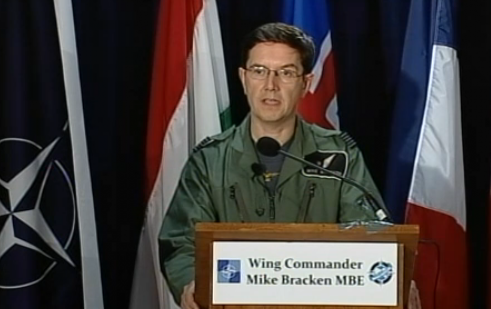Incidents in Libya, NATO explains, supporting photos
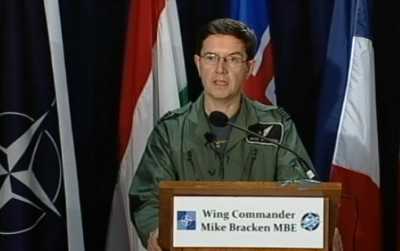
(BRUSSELS2) Gaddafi recently marked a point in the media war which opposes him to NATO, by communication to the press and television interposed, by affirming that the latest bombardments, in Tripoli and Sorman, on Sunday and Monday, caused respectively 15 and 9 civilian casualties and the photo of a downed helicopter. Despite some reactions, NATO clearly seemed late with a statement on the Libyan leader. She tried, today, to raise the bar. Supporting oral demonstrations and satellite photos, Commodore Mike Bracken, spokesman for the operation Unified Protector wanted to show the origins of each "incident", distinguishing them well.
Three separate incidents
"These three incidents are completely separate: in the first case, an inextricable situation; in the second, a defect in one of our weapons; in the third, it was a strike that was clearly aimed at a target identified“explained Mike Bracken who spoke by video conference from Naples HQ.
1st incident, Brega, Friday, NATO strikes a column of vehicles which seemed to threaten civilians. But it was one of the rebel vehicles that was hit by NATO fire. "We regret it" explains Mike Bracken. But the situation was "particularly complexbetween the opposition forces and those pro-Gaddafi.
Note: In this "incident", we cannot speak - a priori - of a blunder since the official mandate of NATO is not to support the forces of the CNT against those of Gaddafi (even if in reality it is the case), but to protect Libyan civilians. That fighters die in combat is a risk. It is therefore more of a "friendly fire" as there are some in modern combat. In the second and third "incidents" it is different.
2nd incident, Tripoli, Sunday morning, NATO carried out strikes on certain identified targets. But there was a miss. And the military admit their full responsibility. "One of our weapons failed to hit its intended target - a missile site - due to a technical error. This has caused some civilian casualties"a, before apologizing."We deeply regret the deaths of innocent civilians." NATO Secretary General AF Rasmussen offered his condolences to the families yesterday (Monday).
3rd incident, Sorman near Tripoli, Monday, the situation is more delicate. NATO aimed for a "meaningful" command and control center. "It was a legitimate target, a high-value command." specifies Commodore Bracken, supporting satellite photos. And to continue:On the roof of this building you see 17 dots. These are satellites, some are 3 meters wide. Do you see a lot of buildings that need 17 satellite points on their roof?". he wondered. "We take enough information before deciding on a strike"Just nearby was a municipal school, very close to which this facility was built. The school"has not been reached. Only the command center was (...) We used high precision shooting. “says the senior officer.
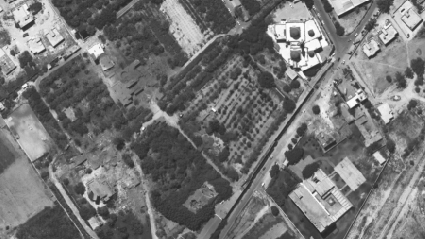
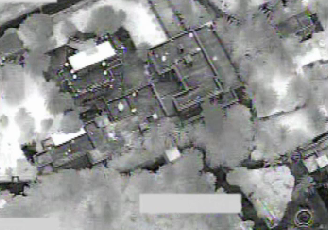
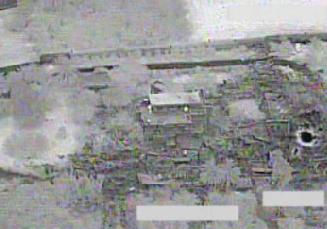
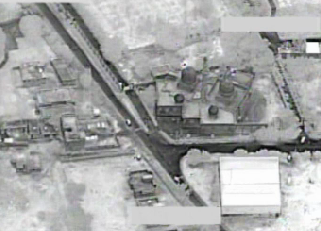
The difference between NATO and the Libyan regime
"Every civilian death and every civilian death is a tragedy“acknowledged Oana Lungescu, the NATO spokesperson. But she sought to mark her difference.”When NATO believes it has caused civilian casualties, we will say so. And we will try as quickly as possible to establish the facts. The tragic accident in Tripoli is an exception“she insisted on explaining”If you look at the approximately 4000 strike sorties (*), you can see that we are taking every precaution to avoid civilian deaths. And we will continue it. Our mission remains in full compliance with Resolution 1973. And our mandate is to use all necessary means to protect civilians and civilian population areas from attack and threats of attack." And to add:We are not targeting specific people. And NATO clearly is not deliberately targeting civilians. This is the difference between NATO and the Gaddafi regime, which has deliberately and indiscriminately targeted civilians since the beginning of the crisis."But we must also be clear - she confessed: "No risk does not exist."
A drone lost over Libya
NATO took the opportunity to confirm the loss of a helicopter drone. "At 7:30 GMT, we lost contact with a drone. A device responsible for carrying out surveillance and reconnaissance above Libyan territory" confirmed Commodore Mike Bracken. It is not, however, a "attack helicopter(as claimed by the Libyan regime) he clarified.
Commentary: the media battle, an issue
The "war" in Libya is developing on the three simultaneous grounds of the modern era: military, media and politics.
On the military ground, the combined effect of the land action of the opposition and the air action of the Allied planes and helicopters allowed some undeniable successes. But these gains can be quickly wiped out if losses are recorded on the other two courts.
Indeed, despite all these justifications which can be taken seriously, NATO has suffered a serious media setback, by reacting with delay and timidity to each piece of information given by Tripoli, whether for civilian victims or casualties of materials. It thus gave, involuntarily, a little credibility to the Gaddafi regime, a regime which has acquired a certain experience in media manipulation for years.
This media battle is vital to validate the continuum policy. The political backing for this commitment remains, in fact, quite fragile, both at the international level (the UN) and at the national level. It will therefore be necessary to carefully monitor developments in the United States and Italy, in particular, two strategic countries in the continuation of the operation and where the situation appears particularly tense, at least in an economic context.
(*) This number is equivalent to the number of planes that have been deployed for strikes, but not to the actual strikes. The number of effective strikes in Libya is equivalent to about a third of the outputs, or about 1400 strikes to date.